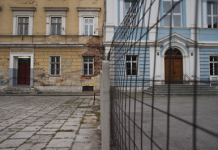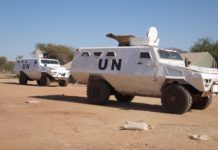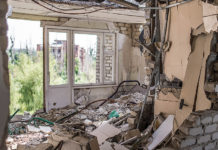Lessons learned
Lucie Barrault, Soline Richaud,Magda Toma and Emilia Zanchetta
As Haiti is facing an extremely violent natural disaster, we find ourselves confronted with a similar scenario to the tsunami of 2004. Incessant calls for donations, shocking pictures, launching of a big humanitarian action. Thus we can wonder whether or not we have really learned from our own mistakes. Five years after the tsunami, how can we take advantage of this experience to handle the current situation in Port-au-Prince?
On December 26th 2004, at 07:58 a.m., the Sumatra Island was woken up by a 9.1 to 9.3 on Richter scale earthquake. The whole area was shaken by the equivalent of 30,000 Hiroshima bombs (1).
A few hours after the trembling, the rough waves arrived in Indonesia, Malaysia, Thailand, Burma, Bangladesh, Sri Lanka and India, and also in Somalia, the Maldives, Kenya and Tanzania. About 300,000 people were killed (2), 170,000 of whom were Indonesian inhabitants. The tsunami soon reached our TV screens.
Events were over exposed in the media, broadcasts were leeched off, leading to the rise of global compassion. A natural disaster had never before led to such a large and multiform international feedback, from the public and private sectors. What lessons could we learn from the tsunami of 2004?
The humanitarian sector and the media:
a corrupted relationship
For the first time in the media’s history, a natural disaster was at the core of all types of communication (television, radio, Internet and newspapers), all over the world. In the case of the tsunami, the media broke the rules of their “traditional” position by becoming humanitarians in the field, even fundraisers. Since the meaning of “media” is large, it is worth defining the role played by each part in the tsunami disaster.
Not all of them face tragedies in the same way; nor do they analyze or react in an identical manner. On the one hand, the written press keeps its informative role by producing sharp analyses and criticisms, appealing at readers’ generosity at the same time. On the other hand, TV channels ceaselessly reproduced pictures and videos while calling for donations. Many of them also took advantage of this news to increase their rating and influence the public opinion.
Traditionally, there has been a true complicity and balanced relationship between journalists and humanitarian workers, as two anti-establishment forces fighting against injustices committed by governments or by the private sector.
This interaction worked quite well, as each player’s role was clearly defined: NGOs would supply reliable information and various serious reports to journalists regarding what was happening in the field, whereas journalists, thanks to their means of communication, would make any crisis visible, which provides them a high audience, but also allows NGOs to become famous, to raise more funds, and, eventually, to fight against injustice and fulfill their missions.
The tsunami unhinged this pattern, thus the press started pushing the humanitarians to “action”, breaking the “traditional” relationship between the two. In such a context, humanitarian workers should be careful about exposing themselves to the media so as to avoid pressures from them.
Journalists are used to obtaining information instantly, but time does not have the same value for humanitarian workers and their intervention and relief reconstruction tasks. The study of social indicators, for instance, which is compulsory before rebuilding a place, cannot be done in an emergency situation; it takes time.
In a reality show and ready-to-inform era, the tsunami has been considered by certain media as a new bone to gnaw on, leading to a voyeuristic and obscene drift.
Nevertheless, the media had some positive effects during the post-crisis phase, especially by raising millions of dollars in funding. Thanks to their contribution, among others, the tsunami was the humanitarian intervention which has been the most generously and quickly financed of all times, the raised funds being twelve to thirteen times higher than previous years’ average of emergency aid (3). The Internet was a key player, links as Amazon or Google generated every day millions of dollars of private contributions. In the United States, about half of the 324 millions of dollars of contributions were collected online. 16 of the 20 million dollars raised by the New York office of Doctors without Borders (Médecins Sans Frontières) were donated through the Internet (4). Consequently, NGOs cannot deny the important role of the media, and the benefit of being “close” to them. But, at the same time, it is essential to maintain a ‘traditional’ relationship with them. NGOs have to be aware of the damage that media could cause them in a time of crisis, and they have to anticipate and be ready to handle their pressure in urgent humanitarian matters.
The fickleness of NGOs’ mandates
Dysfunctional problems were not only caused by the media, but also by international humanitarian institutions. NGOs which gathered the most important amounts of donations were not necessarily the ones focusing on handling the suffering of the victims, or the ones with the best professional staff to handle the drama. Some of them did not even have, at that time, a local agency, or representation in the field, nor even clear goals in the territory. NGOs receiving donations have not always been able to cope with the emergency situation. One year after the tsunami, the first financial accountable balance in France was already stressing the failure: the largest part of the donations (66.5%) had still not been used by December 31st 2005 (5).
As a consequence of this influx of donations, and in order to honour donors’ expectations, several NGOs adjusted their mandates to “fit” into the field and help the tsunami victims. Given that a small amount of the funds were allocated to the emergency stage, NGOs started developing long term programs, except for Doctors without Borders, the only NGO who asked their sponsors to stop sending donations (without consulting with other colleagues), since the financial help received was enough. Last but not least, several local associations, attracted by the financial godsend, “adjusted” their mandates to benefit from the providential funds. In the North as in the South, NGOs were even created for this purpose, as the French sad example of Zoë’s Arc (Arche de Zoé).
The core question about NGOs’ mission thus implicit: is it their responsibility to determine how many schools, hospitals or barracks should be built? Is it their role to redraw the infrastructure map of a country after a natural disaster? Are they focused on emergency relief or long term reconstruction?
Days after the tragedy, the humanitarian cacophony unintentionally spread out the mistakes committed in the field: competition between the actors; inexperience or even amateurism proved by some of them; incorrect division of tasks by actors, which caused some areas to be overwhelmed by the humanitarian aid wave, when others received less attention; assistance which was often inappropriate and did not correspond to the needs; delays…
The harmful consequences of the lack
of coordination between humanitarian actors
The most polemic fact was the absence of coordination between the actions of NGOs and the actors involved in the emergency and reconstruction stages after the disaster. It was expected for at least a minimal harmony and fluent communication between actors to be maintained, but none of this happened. In the Indonesian region of Aceh, for instance, a dozen UN agencies and more then 400 NGOs were established, and the only means of coordination was meetings.
These gatherings were hardly fruitful. Linguistic barriers, lack of human resources, and simply lack of time hindered the good practice of these efforts. For want of true coordination and sharing of roles, two months after the tsunami Aceh’s population still did not have access to basic sanitary installations.
This bleak report is the result of the tough competition between NGOs that they manifested on location, based on the fear of losing their self-government. The humanitarian involvement following the tsunami was characterized by its lack of planning; there was a wrong perception of the victims’ real needs, even though the funds were ready to be used, leaving the general public and the local population with an unpleasant impression of quasi-euphoric amateurism.
Besides the lack of organisation, relief programs also showed a lack of coherence, the aid offered to the fishers being a good example. Right after the tsunami, a major part of the fishing industry was reduced due to the destruction of fishers’ boats. The international community, in order to help them, started sending boats, without even knowing that their need had already been fulfilled. Five years later, fishers are still receiving boats…
The insufficient acknowledgement
of the economic and political contexts
Although actors had good intentions, their intervention disorganized the local communities. The massive disembark of occidental NGOs led to a price inflation of almost 8%.
As a matter of fact, they introduced the raised money into the local and fragile economic systems, not paying attention to the consequences. In addition, NGOs’ actions were not always welcomed by the local population, who also accused them of favouring a number of political factions.
It must be noted that in Sri Lanka foreign assistance did not contribute to the peace building, but on the contrary, participated in reinforcing inequalities between different districts. Indeed, the criterion for aid delivery was not based on the real needs of the people, but on political priorities, which also made it more complicated for the government and the LTTE to reach an agreement.
Consequently, relief and reconstruction activities were mainly carried out in the southern province under governmental supervision. This situation increased other provinces’ frustration and nourished social tensions.
The passion that lights up humanitarian actors must be tempered to avoid handling crisis with naivety and unprofessionalism. Neutrality and impartiality, two sine qua non conditions of any humanitarian action, run the risk of being easily set aside if the situation drifts away from the supervision of strong organisations, as was the case with the 2004 tsunami.
From this crisis we can conclude that the unilateral North-South assistance model has expired. We, as junior humanitarian actors, should evolve and break this logic, so as to address the humanitarian scenario with realism and a transversal vision. While the NGO sector has matured in many countries and is being recognized as a political actor, how is it still possible for them to arrive in the field and try to manage such a catastrophe without consulting the local associations?
It would be understandable if there were no such associations, but this was not the case for most villages hit by the tsunami. Local associations were active, prepared and present in the areas, and were also the first ones to take care of the victims. This quasi neo-colonialist model of assistance ignores the respect of cultures and local actors, and should not correspond to the behaviour of contemporary humanitarian actors.
Finally, it is essential to fully understand that uniting forces will always have a larger impact: an appropriate cooperation between international NGOs and local associations will always give efficient results. In the case of the tsunami, local information could have been more strategically managed; in order to be completely aware of the community’s needs and suffering, which could also have helped first-aid workers to identify the target groups. The obvious lack of coordination between international NGOs and local associations underlines one of the challenges that we may face in the near future: setting up, within large NGOs, specific departments specialised in researching local associations to handle humanitarian crises, but working together and as equal partners.
(1) http://www.cite-ciences.fr/francais/ala_cite/science_actualites/sitesactu/question_actu.php?langue=fr&id_article=3643
(2) According to the Office of humanitarian aid of the European commission, http://ec.europa.eu/echo/index_fr.htm
(3) HINTZY J., « Les dons pour le tsunami ont été 12 à 13 fois supérieurs à l’urgence moyenne des années précédentes », Techniques financières et développement, n°83, June 2006.
(4) Brennen Jensen & Nicole Wallace, “$406-Million has Been Donated to American Charities Helping the Tsunami Victims,” The Chronicle of Philanthropy, January 13, 2005.
(5) Court of Auditors, « L’aide française aux victimes du tsunami du 26 décembre 2004 », January 2007,
Auteurs : Lucie Barrault, Soline Richaud, Magda Toma and Emilia Zanchetta: Master Students of International Solidarity and Action, Catholic Institute of Paris. Module « Ethics of humanitarian action », under the direction of Pierre Micheletti.
Grotius International
Derniers articles parGrotius International (voir tous)
- 54h pour innover pour l’Afrique – 13 juin 2019
- Guide Pratique Des Associations Et ONG Internationales Au Togo – 26 avril 2019
- Paul Salvanès, « La haine qu’il faut » – 13 mars 2018







